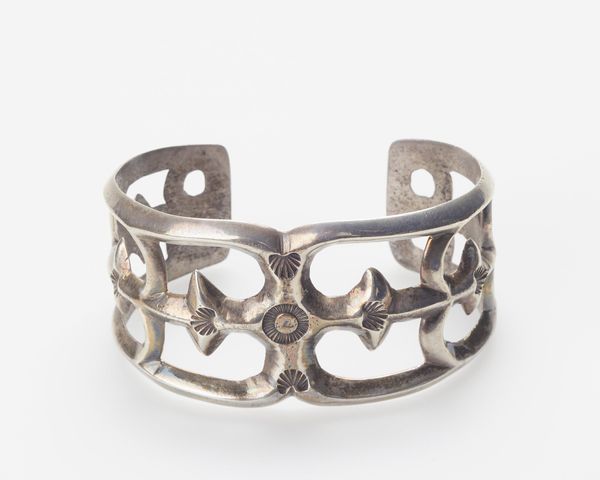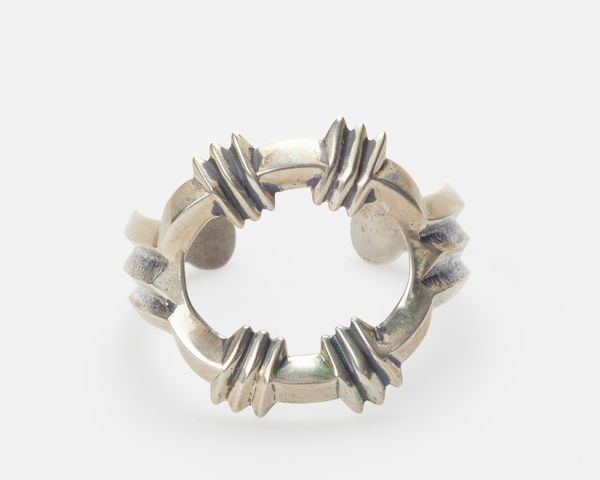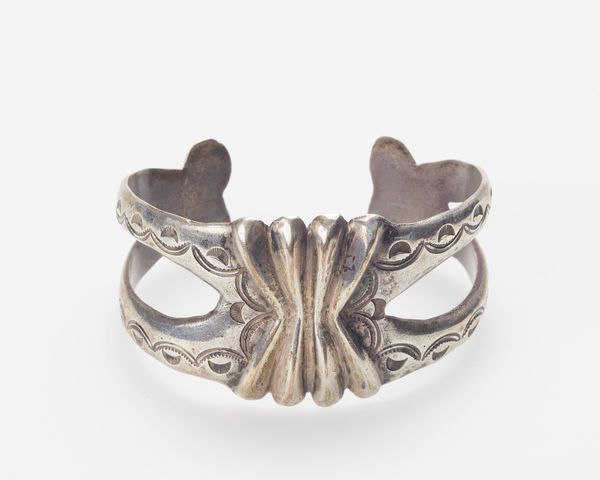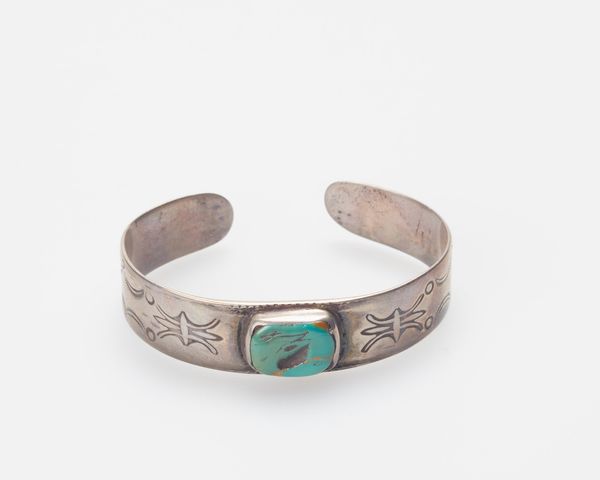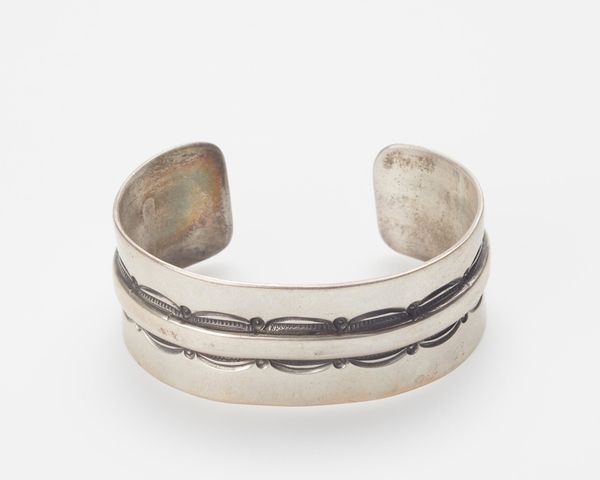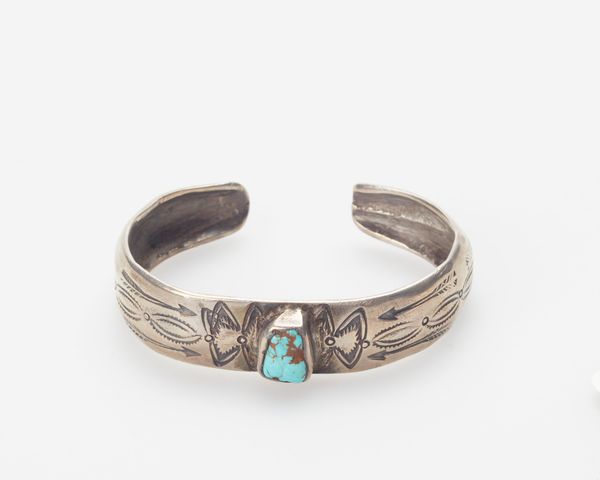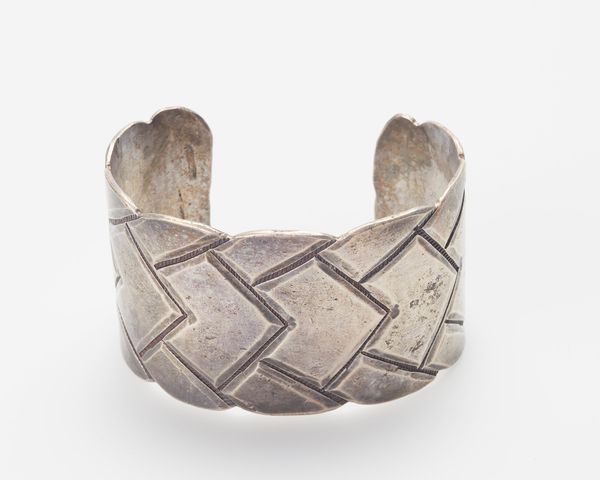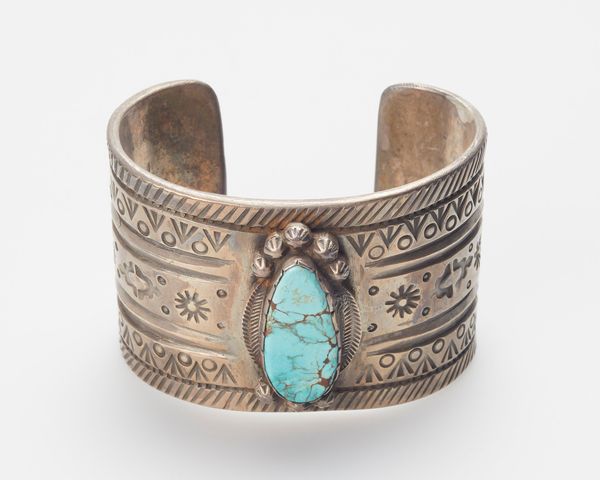
silver, metal
#
silver
#
metal
#
indigenous-americas
Dimensions: 2 5/16 x 3/4 in. (5.87 x 1.91 cm)
Copyright: Public Domain
Editor: So, this is a Navajo silver bracelet, made around 1950. The clean, precise geometry has a kind of understated elegance. What can you tell me about it? Curator: I’m interested in this bracelet’s material history. Silver wasn’t traditionally part of Navajo jewelry making. Its integration signals the influence of trade and interaction with European settlers. Editor: How would they have obtained the silver? Curator: Probably through trade or, later, by working directly in mines. The labor involved in extracting and processing the silver is an essential part of the bracelet's story. Consider the silversmithing techniques—the hammering, stamping, and possibly casting—each a skilled process rooted in cultural exchange and adaptation. What do those geometric shapes suggest to you? Editor: I see possibly simplified flowers. Curator: And where might that aesthetic originate? Perhaps the indigenous worldview combined with new European influence. It’s decorative, yes, but also represents a shift in the materials used to make the objects. These pieces were often made for sale to tourists. So how do labor and consumption become part of understanding this decorative artwork? Editor: So the piece becomes an artifact not just of art, but also of economic and cultural exchange? It seems less like a simple adornment and more of an emblem of that relationship. Curator: Exactly. By focusing on its materiality and how it came into being, we can unlock deeper understandings of cultural contact and transformation. Editor: Thanks, I will look at adornments in a new way going forward. Curator: Likewise. Considering craft practices within social contexts really helps unlock different meanings.
Comments
No comments
Be the first to comment and join the conversation on the ultimate creative platform.

